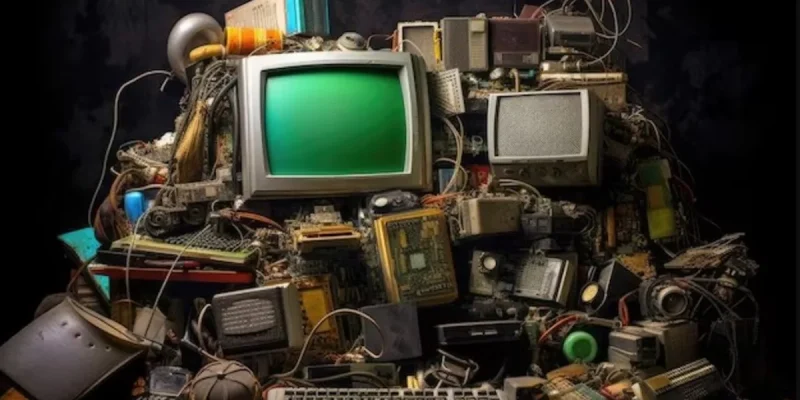Tech Obsolescence: Causes, Impacts, and How to Stay Ahead

In the fast-evolving world of technology, obsolescence is an inevitable reality. Devices and software that seemed cutting-edge just a few years ago are now outdated, unsupported, or incompatible. This phenomenon, known as tech obsolescence, impacts consumers, businesses, and the environment in profound ways. But what exactly is tech obsolescence, and how can you prepare for and even leverage it?
What is Tech Obsolescence?
Tech obsolescence refers to the process by which technology becomes outdated or no longer useful due to advancements in innovation, changes in standards, or the discontinuation of support by manufacturers or developers. There are several types of tech obsolescence:
- Planned Obsolescence: Deliberate design of products with a limited lifespan.
- Functional Obsolescence: When a product is technically outpaced by newer models.
- Systemic Obsolescence: Compatibility issues due to changes in ecosystem (e.g., software updates).
- Perceived Obsolescence: Driven by trends or marketing, not functionality.
Causes of Tech Obsolescence
Rapid Technological Advancements
Innovations in hardware and software happen at lightning speed. A smartphone released today could be deemed obsolete in two years due to better performance, new features, and improved energy efficiency in newer models.
Software Lifecycle and Updates
Operating systems and applications are regularly updated. Devices that can’t support these updates eventually fall behind in security and performance.
Market Competition and Consumer Trends
Tech companies continuously push for product differentiation. New designs and features create perceived value, making older models less appealing even if still functional.
Lack of Backward Compatibility
New platforms or standards often don’t support older hardware. For instance, many new laptops no longer support traditional USB-A ports or optical drives.
Environmental and Policy Regulations
Government regulations may drive tech obsolescence by mandating energy efficiency, security standards, or digital sustainability practices.
Examples of Tech Obsolescence
- Smartphones: Apple and Android devices lose iOS and Android support within 5-7 years.
- Flash Storage: USB 2.0 and CDs have been replaced by faster SSDs and cloud storage.
- Software: Adobe Flash, once ubiquitous for web animation, was officially discontinued in 2020.
- Gaming Consoles: Xbox 360 and PlayStation 3 no longer receive updates or have active marketplaces.
- Enterprise Hardware: Older Cisco or Dell systems become obsolete due to changes in enterprise infrastructure.
The Impact of Tech Obsolescence
Economic Impact
- Consumers face recurring costs to upgrade devices.
- Businesses incur expenses for retraining staff and updating systems.
- Manufacturers benefit from repeat sales due to shorter product cycles.
Environmental Impact
Tech obsolescence fuels electronic waste (e-waste). Discarded phones, laptops, and gadgets often end up in landfills or poorly managed recycling centers, contributing to pollution and health risks.
Security Risks
Unsupported devices and software are vulnerable to cyberattacks. The lack of updates leaves security holes open to exploitation.
Digital Divide
Lower-income users may not afford frequent upgrades, leading to inequality in access to current technologies and services.
Future-Proofing Strategies
Choose Upgradable Devices
Opt for devices with modular components (e.g., desktops with upgradeable RAM or storage). This extends their useful life and makes them adaptable to evolving needs.
Use Open Standards and Platforms
Select tools and systems that adhere to open standards. This reduces dependence on proprietary ecosystems that may end support unexpectedly.
Stay Informed
Follow tech trends and roadmaps published by major hardware/software vendors to anticipate changes and plan accordingly.
Recycle and Resell Responsibly
Use certified e-waste recyclers or marketplaces like Gazelle, Decluttr, or Swappa to responsibly discard or sell old tech.
Regular Maintenance
Perform firmware and software updates, clean hardware components, and avoid bloatware to maximize the performance and longevity of your devices.
Tech Obsolescence in Business
For organizations, managing tech obsolescence is crucial to maintaining competitive advantage and operational efficiency.
- IT Lifecycle Management: Establish structured policies to assess, update, and replace hardware/software.
- Cloud Migration: Moving to cloud services can decouple systems from hardware limitations.
- Vendor Partnerships: Maintain close relationships with vendors to ensure continued support and updates.
Businesses should also conduct regular audits to identify legacy systems and invest in training employees on emerging technologies to prevent workforce skill obsolescence.
Environmental Sustainability and Obsolescence
Governments and NGOs are advocating for sustainable tech practices, including:
- Right to Repair Legislation: Encourages repairability to extend device lifespan.
- Eco-design Directives: Regulate the design of products for easier recycling and lower energy use.
- Tech Donation Programs: Provide functional but outdated devices to underserved communities.
Adopting a circular economy model, where resources are reused and products are refurbished or recycled, is key to mitigating the environmental impact of tech obsolescence.
SEO Optimization Tips for Businesses Facing Obsolescence
For businesses in tech-adjacent industries, SEO can be a powerful tool to maintain relevance, even as products become outdated.
- Target Long-Tail Keywords: e.g., “best budget smartphones 2023” or “how to upgrade old MacBook RAM”.
- Create Evergreen Content: Focus on timeless guides, comparisons, and maintenance tutorials.
- Update Existing Pages: Refresh old content to remain relevant in search results.
- Highlight Support Services: Rank for terms like “repair services for Windows 7 laptops” or “replace battery in Galaxy S9”.
Conclusion
Tech obsolescence is both a challenge and an opportunity. While it drives consumerism and innovation, it also contributes to waste and inequality. By understanding its causes and effects, and implementing proactive strategies, individuals and businesses can mitigate its downsides and harness its momentum. In the age of constant digital transformation, staying adaptive is the ultimate key to long-term success.
FAQs
1. What is the difference between functional and planned obsolescence?
Functional obsolescence happens naturally as newer, better technologies emerge. Planned obsolescence is a deliberate strategy where products are designed to fail or become outdated quickly to drive future sales.
2. How often should I upgrade my tech devices?
It depends on your usage, but a typical upgrade cycle is every 3-5 years for laptops and smartphones. Prioritize upgrades when performance, security, or compatibility issues become significant.
3. Can tech obsolescence be environmentally friendly?
Yes, if paired with proper recycling, repairability, and eco-conscious design. The key is reducing unnecessary consumption and embracing sustainable practices.
4. Is older software more vulnerable to cyber threats?
Absolutely. Unsupported software doesn’t receive security patches, making it a prime target for cybercriminals. Always use supported versions of critical applications.
5. What can businesses do to combat tech obsolescence?
They should adopt IT lifecycle management practices, embrace cloud technologies, and stay informed about industry trends. Staff training and modular systems also help reduce the long-term costs of obsolescence.
Also read: Tiong Bahru Market Car Park Guide: Parking Rates, Hours, and Tips











